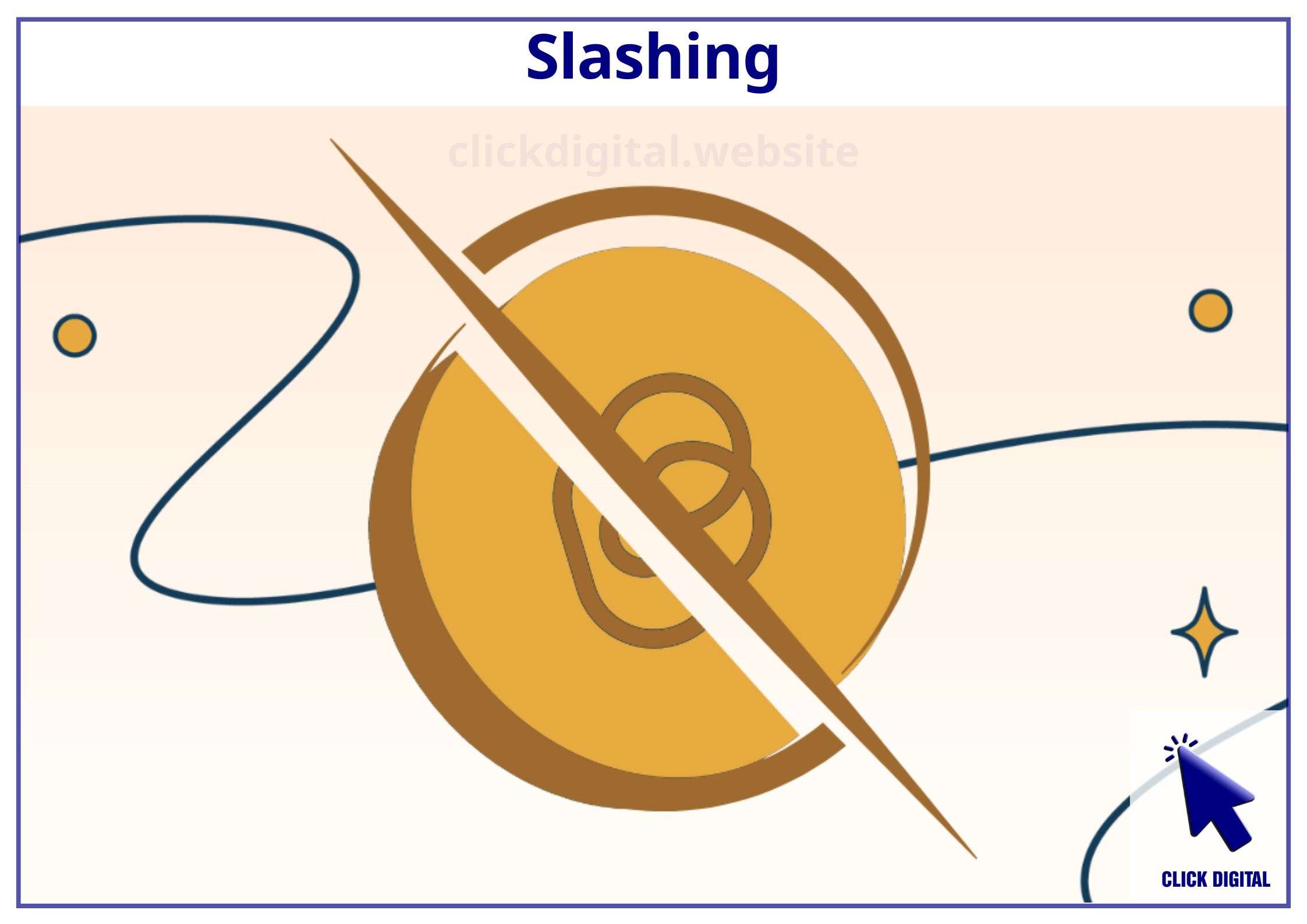Summary:
In the world of staking and restaking, slashing risk—losing tokens when a validator misbehaves—is a major concern for investors. To survive (and profit), it’s essential to understand how to price this risk and how to use smart risk strategies like Minimax and Value at Risk (VaR). This article by Click Digital explains these concepts clearly, with real-world examples—and a light touch of humor to keep your brain relaxed.
Table of Contents
What Is Slashing and Why Should You Care?
Slashing is a penalty applied to validators on a blockchain when they violate protocol rules—whether accidentally or intentionally. The punishment? A portion (or all) of their staked tokens can be slashed.
Two Common Types of Slashing
| Type | Cause | Real Example |
|---|---|---|
| Intentional | Fraud, double-signing, network attacks | Some Ethereum validators were slashed for double-signing |
| Accidental | Technical failure, downtime, disconnection | Primev was slashed due to hardware error—even without cheating |
Valuing the Risk: How Much Slashing Is Too Much?
When staking tokens, investors should calculate how much slashing risk they’re taking. This helps answer:
“Is the promised reward worth the potential loss?”
Basic Formula:
Risk Value = Probability of Event × Potential Loss
Example:
- Annual chance of slashing: 2%
- If slashed, 20% of stake is lost
→ Risk = 0.02 × 0.2 = 0.4% stake/year
That means: if a staking network offers less than 0.4% yield per year, you’re losing money on average.
Minimax: Protecting Against the Worst-Case Scenario
The Minimax strategy doesn’t try to calculate risk exactly—it focuses on reducing losses in the worst-case scenario.
“What’s the worst that can happen? How do I lose the least if it does?”
Example:
| Scenario | Network A Loss | Network B Loss |
|---|---|---|
| ω₁ | 10% | 5% |
| ω₂ | 0% | 20% |
- Stake 100% in A → max loss = 10%
- Stake 100% in B → max loss = 20%
- Stake 60% A + 40% B → max loss = 8%
✅ Minimax chooses the allocation with the lowest maximum loss, regardless of probabilities.
Perfect for risk-averse users or those who want to sleep well even when the market’s on fire 🔥.
VaR – Value at Risk: Measuring Loss with Statistics, Not Vibes
Unlike Minimax, VaR (Value at Risk) is a statistical tool that estimates the maximum expected loss within a given time period and confidence level.
“With 99% certainty, how much could I lose in 7 days?”
Real Example:
- You stake $1,000,000 in a blockchain network
- Historical 7-day data shows: VaR (99%) = $50,000
→ There’s a 99% chance you won’t lose more than $50,000 in a week
This helps investors and platforms make decisions based on data—not gut feelings or “faith in decentralization.”
Doing “Quasi-VaR” With Proxy Data
In crypto, good historical data is rare. So you can estimate VaR using proxy indicators:
- Validator uptime history
- MEV/liveness failure reports from explorers or nodes
- Frequency of network downtime or micro-forks
- Expert assumption: “This validator has a 0.5% slash risk this month”
Not as precise as traditional finance, but way better than guessing blindly.
Quick Comparison: Risk Pricing vs Minimax vs VaR
| Criteria | Risk Pricing | Minimax | Value at Risk (VaR) |
|---|---|---|---|
| Main Question | How much is the risk worth? | What’s the worst-case loss? | What’s the max loss with 99% confidence? |
| Best For | Retail investors, insurance, pricing tools | Risk-averse users | Funds, financial institutions |
| Main Goal | Evaluate real risk/reward | Minimize maximum pain | Manage risk using probability |
Final Thoughts
- Risk pricing helps avoid projects that sound rewarding but hide deadly risk
- Minimax protects you when things go sideways (and they often do in crypto)
- VaR makes you sound smart in front of VCs—and gives confidence based on real data
🛡️ In staking, knowing risk isn’t enough. You need to know how much it costs, and what strategy to use against it.
Want help modeling your validator risk or pricing slashing insurance into your DeFi platform? Ping us at Click Digital—we’ll help you go from guessing to quantifying.

